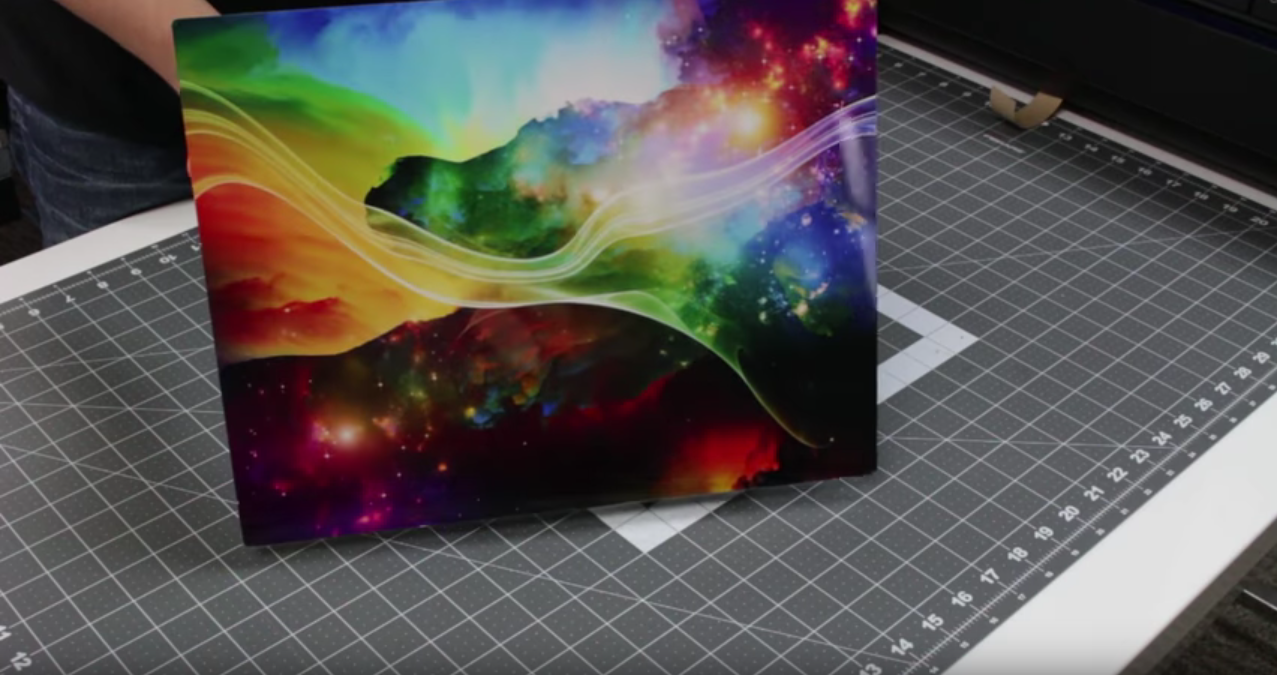
Looking to produce 100 year prints? Here’s 7 key tips for long print life that will give you huge longevity and print quality over time.
If you’re serious about your art, you’re likely producing prints not just for today, not just for one gallery showing, but for a lifetime.
If you picture your grandchildren enjoying your printed art, or the grandchildren of the customers who purchase your art, there are a number of factors you’ll want to be aware of.
Without using the right tools, media, and techniques, your art will fade and wither over time.
Here’s a quick rundown of the factors that you can control when working towards creating prints that last 100 years.
This post is a basic overview, but each section includes links for additional recommended reading. Together, all of these related posts will make for a perfect in-depth study of print permanence.
1. USE PIGMENT INKS

Avoid chromogenic dye prints (wet-processed, digital C-prints).
Always produce prints on an inkjet printer using pigment inks, not dyes. Use OEM inks for best results, not third-party aftermarket inks.
Although some third-party inks may initially produce a satisfactory print to your eyes, remember that the permanence ratings are most likely substantially lower than that of OEM inks.
2. USE THE NEWEST MODEL PRINTERS

Use the newest model printers if possible, as ink sets continue to show improvements in longevity, color gamut, DMax, and more.
Sometimes people hold on to older model printers too long, thinking they are saving money. Or, for example, to try and avoid nozzle clogging problems in the case of Epson printers.
But remember print permanence ratings for older model printers and their ink sets are much less favorable. And you gain the added advantages listed above
3. AVOID PAPERS THAT CONTAIN OBAS

Print on OBA-free papers (one free of optical brightening agents or additives).
Try and wean yourself away from the bright white papers that contain OBAs. Beware that most all RC photo papers have OBAs in them, such as glossy, luster, etc.
Keep in mind that as optical brighteners begin to dissipate over time from exposure to UV light, the paper will revert to its original warmer (yellower) color.
But it’s not just about a warmer paper: this degradation also has an effect on colors in the print, especially those in the highlights where more of the natural paper color shows through.
4. PICK YOUR PAPER VERY CAREFULLY

Not all papers are equal. Inkjet coatings matter.
As pigment ink sets have evolved and gotten much better, we have now moved to media and coatings as defining factors in print permanence.
Choose a paper with a 100% cotton base, or at least a high grade, alpha cellulose base that is acid and lignin free.
Do your research on longevity test reports using the same paper but different printers/inks. See how various papers fare.
5. CHOOSE THE RIGHT ENVIRONMENT

Remember that total accumulated light exposure on artwork over time is what matters. The environment is critical.
You have control over print display conditions and can take steps to lower the light levels.
If selling your work, you can provide education and advice to your customers on optimal display conditions.
Never ever allow a print to be exposed to direct sunlight, even for a few minutes per day. Note that you may not be aware a given location receives even a tiny amount of direct sunlight each day.
Also, avoid heat and high humidity. Keep photos at or below 70 degrees F and between 30 – 50 percent relative humidity year round.
When framing prints, use conservation glass to block UV light. Dust covers on the back of the frame will help seal out insects, debris, and airborne pollutants.
6. BUY AND USE A LUX METER TO MEASURE LIGHT

They are inexpensive and can be purchased online from B&H to Amazon. Lux is a unit of measurement that tells how much light is falling on an object.
Measure lighting levels around your home or office to help determine the best display location. The lower the lux, the better the print life.
Keep light levels as low as possible, preferably at 228 lux or less.
Remember that Wilhelm Imaging Research (WIR) test reports are based on 450 lux for 12 hours per day, twice that amount.
7. KEEP YOURSELF INFORMED

Become a member of Aardenburg Imaging and Archives, then read the test reports based on the more appropriate I* metric testing system we discussed.

Renée Besta is a fine art photographer and printer, digital imaging and graphics instructor, graphic designer, and exhibit producer who has been avidly engaged in the art form for over 35 years.
For more info on Renée you can check out her website.




